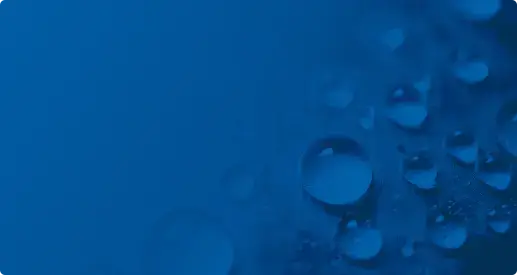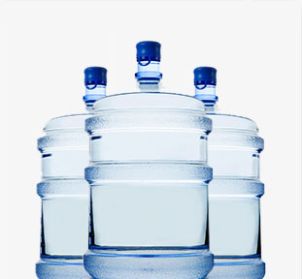
Why Is My Hair So Dry?

Dry hair can be a big frustration. It’s uncomfortable, difficult to style, more expensive to take care of — and, worse, it can have a real impact on your self-esteem.
You and your hair deserve better. That’s why it’s important to brush up on all the reasons you might have dry hair (and what you can do about it). Some of them — like your home’s water quality (had a test for hard water lately?) — might even surprise you. Others are more expected, from regular use of heated styling tools to too-frequent hair washing to oil-stripping hair treatments like perms, dyes and relaxers.
Read on to better understand how dry hair happens and what you can do about it.
A Closer Look at Dry Hair
 To understand the root causes of dryness, your first stop should be researching hair itself. Here are a few key things to know:
To understand the root causes of dryness, your first stop should be researching hair itself. Here are a few key things to know:
How Does Hair Work?
You might not think much about what your hair actually is or how it gets its unique appearance. However, a variety of elements have a role to play in hair care and health.
Consider an individual hair. It has a shaft — the part you see — and consists of three layers: cuticle, cortex and medulla.
Cuticle: This protective outer layer is responsive to different conditions, like the acidity of your water.
- Cortex: The cortex is an inner layer of coiled proteins that gives hair its elasticity. Damaged hair is sometimes the result of an unhappy cortex; for example, when the cuticle is worn away and the cortex frays, you see split ends.
- Medulla: Do you have thick, curly hair? If so, your hairs probably have a medulla — a spongy center made of tissue. Thinner, finer hair often doesn’t have this layer.
The hair shaft is supported by a root under the skin. This root is protected by something called a hair follicle — skin and connective tissue connected to a sebaceous gland. These glands are responsible for lubricating the follicles, which means dryness issues sometimes start right here.
Of course, there’s more to the hair story. The hair’s root ends in a bulb, where new cells develop, stick together and solidify until they’re pushed out through the skin. That’s how hair grows — and it happens at a rate of about 1 centimeter per month. As this process occurs, the cross-sectional shape of the hair determines its type, which is why you might have straight hair while a friend has natural curls. In some cases, the hair growth rate and shape can also play a role in dryness.
Why Doesn’t Hair Hold Moisture?
Your hair’s ability to retain moisture is affected by porosity. If the cells in the cuticle are packed tightly, there’s no room for water or healthy oils to get in — so low porosity can sometimes lead to hair dryness.
To test your hair’s porosity, remove one freshly cleaned strand and put it in a glass of water. If it floats, it likely has low porosity; if it stays near the middle or sinks, it probably has higher porosity.
How Do You Know You Have Dry Hair?
Dry hair isn’t always obvious at first glance. You’ll likely notice it before anyone else does.
That’s because the first sign of hair dryness is often inconvenience. You may notice your hair doesn’t feel the same to the touch and is a bit more difficult to manage. As the dryness progresses, potentially leading to damaged hair, you might notice frizziness, brittle hair shafts, scalp discomfort and more.
What Are the Downsides of Dry Hair?
Healthy hair is easier to style and care for. Unfortunately, the same isn’t true for frizzy hair, brittle hair and any other form of dryness.
That’s because dry, dull hair is crying out for help. It generally leads to more money spent on conditioner and other hair care products that may not address the core problem — and, worse yet, its appearance starts to change. Soon, you may not feel like you have your natural hair anymore, all because dryness has made it difficult to control.
5 Potential Reasons for Dry Hair
Getting to the bottom of your hair problems can benefit more than just your good looks. Dry hair may lead to dandruff, an itchy scalp and even hair loss. That’s why it’s important to know what your hair might be up against:
Heat Styling Tools
If your hair is dry, you might want to put down your favorite heat styling tool. Curlers, straighteners and high-heat blow dryers can dramatically damage hair by destroying the cuticles. In just ten repeated uses, heat styling tools can cause hair to change color, become rough and dry out.
To help protect your hair from heat damage, allow your hair to air dry. If you’re in a time crunch, be sure to blow dry your hair before using styling tools. While reaching for the curler might save you time, it will cause even more significant damage to your hair.
You can also apply a heat-protectant spray to dried hair for extra safety. These sprays work to provide thermal protection to your hair by building a layer upon the hair’s cuticle. This may help prevent the breakdown of the hair’s natural proteins, which could help your hair feel strong and smooth. For the best results, cut heat styling tools out entirely.
Weather
Weather isn’t doing your hair any favors. If you live in a cold, dry environment, your hair may be in serious trouble. Dry air lifts the hair cuticle, which releases moisture and causes breakage and frizz. That said, those in warm climates are also at risk of too much UV exposure from the sun. This can cause hair to become just as dry and brittle.
Luckily, there’s no need to spend every day indoors. Take care of your hair by hydrating it with oils and products that restore moisture at the root. You can also use hats or sweatshirt hoods to protect your hair from the elements while you run from the car to the store or walk the dog.
Hard Water
You’ve likely spent time considering the shampoo and conditioner you use — but what about your water?
Hard water is an often unexpected culprit of dry hair. It causes a mineral buildup of magnesium and calcium on your hair and skin, potentially leading to dryness and irritation. Researchers have even found that just washing your hair for ten minutes a day can build a layer of scum, potentially resulting in dryer, duller hair.
The truth about hard water is that it’s difficult to spot. Because you can’t see or smell it, you may not even realize you have high levels of water hardness until you notice the impact on your hair, skin and nails. That’s why the best way to catch hard water issues is to have a professional water test and consultation. You’ll learn all about your home’s water quality, including potential contaminants and pH levels, in addition to hardness measurements.*
Wondering if you have hard water – and how to fix it?
Download Your FREE Hard Water Handbook
Washing Your Hair Too Often
When you use shampoo to clean your hair, it strips away visible debris and excess grease. However, shampoo can also strip your hair of natural oils, which provide moisture and shine.
There is such a thing as washing your hair too often. Unless your hair is naturally greasy, you should only wash it once a week — especially if you just did that quick test and found out your hair has low porosity and is more vulnerable to dryness. That said, the frequency with which you wash your hair may differ depending on your gender, race and environment.
Unsure how much time you should leave in between washes? Use the next few weeks to gradually decrease your number of weekly washes until you reach the perfect medium.
Oil-Stripping Treatments
Like with shampoos, oil-stripping treatments like perms, dyes and relaxers can remove the natural oils from hair. Hair dye is the most notorious for its drying effects. Most commercial dyes use peroxide to desaturate your hair’s natural color. This ingredient causes dyed hair to become dry and straw-like. While these treatments might make hair look better, they may not help it feel better. Permanent treatments combined with dyes can lead to the most extreme cases of hair damage, including breakage at the scalp. To keep your hair feeling soft and shiny, avoid chemical treatments when possible.
Why Better Water Equals Better Hair
You may not be able to change the weather or fix your hair’s natural porosity, but you do have control over some elements of your hair care routine — especially the water you use every time you take a bath or shower.
As it turns out, this water can have a big impact on your hair — and your skin health, too. Even your drinking water has a role to play in all these different kinds of wellness. That means water quality is one thing you can’t afford to leave out of your beauty routine.
Here are a few ways to take control of your home’s water:
Water Softening
Water softening is the process of removing calcium and magnesium from your water supply. To make it happen, you need a water softener optimized for your water usage, hardness levels and more. The best systems even come with smart features to help you control and utilize the softening process.
Whole Home Filtration
Whole home water filtration can address chlorine, iron, hydrogen sulfide and more — issues that impact the water you drink, clean and bathe with. When you choose a whole home system, you get improved water quality at every tap.
Under Sink Filtration
If your concerns are mainly around the quality and safety of your drinking water, you need under sink filtration. These systems generally use reverse osmosis to address water quality concerns.
Step Up Your Hair Care Routine With Water Solutions
Dry hair treatments shouldn’t require expensive procedures or products. If you’re looking to restore your hair’s natural shine and volume, first get to the root of the problem. Reduce your weekly washes, avoid hair treatments and — perhaps most importantly — take a closer look at your water quality.
To give your hair care routine the boost it deserves, start by scheduling your free, in-home water test and consultation today.
*Contaminants may not be present in your water.
Related Articles
What Water Do You Use for Formula?
9 min read
A Closer Look at Microplastics in Water
7 min read
Find A Location Near Me

Schedule Your Free
In-Home Water Test
Get better water in your home by scheduling an appointment with your local Culligan Water Expert.
Discover More
See All Articles

What Water Do You Use for Formula? — qa-testing
What water do you use for formula? Here’s what you need to know.
9 min read

Explore

Explore
Our Products

Water Softeners
With any of our soft water systems, get more out of your water-using appliances while spending less on energy and detergent.
View Products

Water Delivery
There’s never been a better time to enjoy the convenience of scheduled bottled water deliveries from the Culligan® Water Experts
View Products

Water Filtration Systems
Culligan's water filtration systems have improved water quality for thousands of families worldwide.
View Products